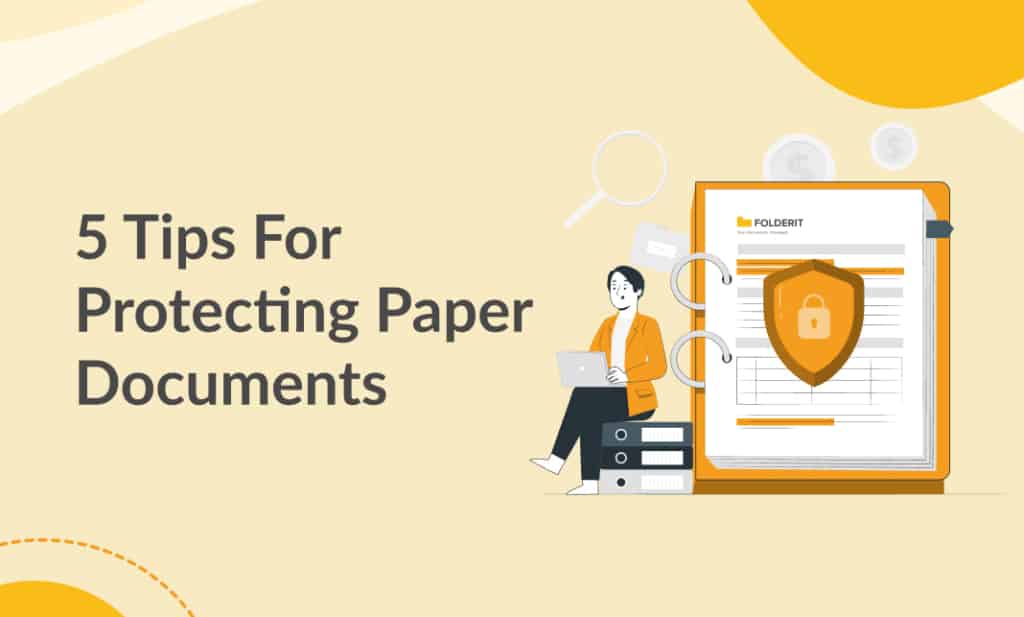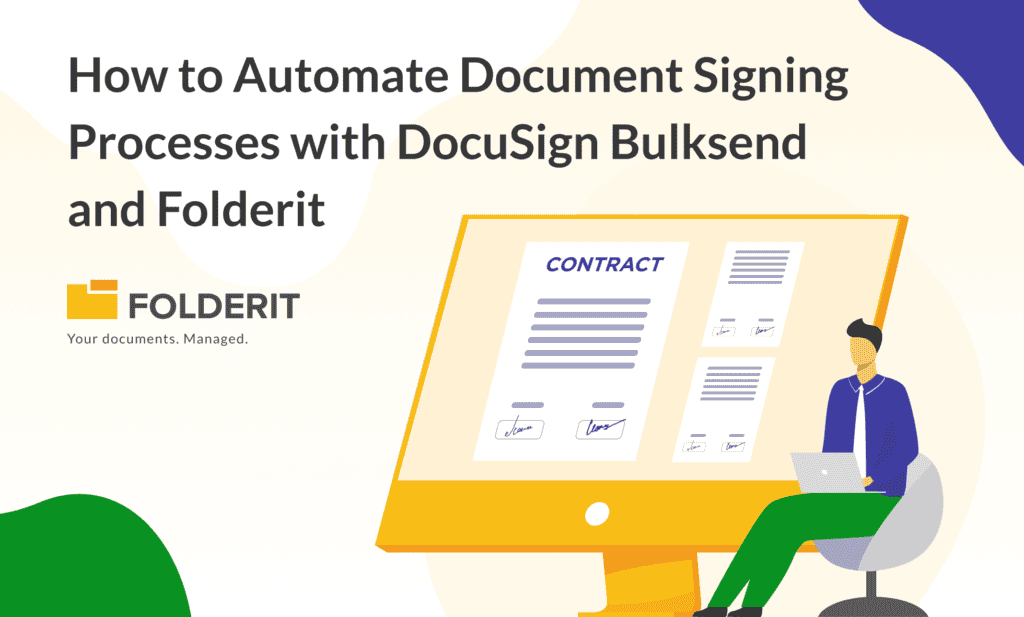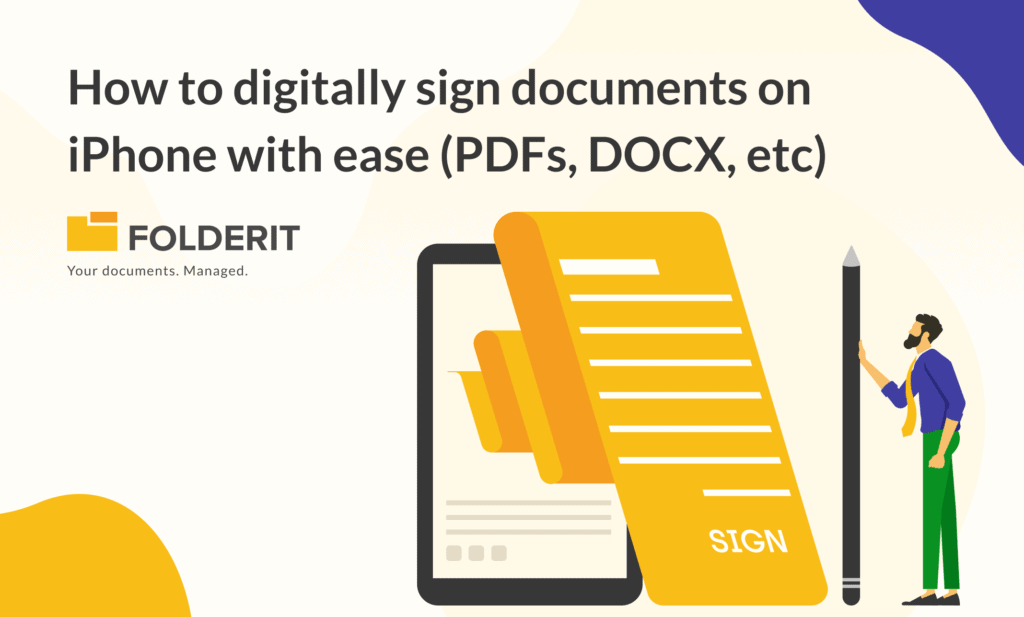Today, we have a simple way for storing paper documents: Make a digital backup of everything. However, we all have aging paper records that need to be protected and stored safely. Even though we live in a digital world, some documents must still be printed, kept, and displayed physically. Businesses can commit to achieving a paperless workplace, but handling old paper documents remains a challenge.
Going paperless is particularly difficult when customers, vendors, and suppliers still rely on paper for invoicing and other forms of paperwork. So, how does your company safeguard paper documents? Here, we look at paper protection options and strategies for preserving and protecting paper documents that your firm cannot function without.
How to Preserve Paper
There are a few paper preservation options to consider if your company has essential records that must be preserved and protected:
How can I keep my paper protected without laminating it?
Waterproof or synthetic paper is intended to protect documents from water damage, wear, and elements that cause degradation. It is tear-resistant and waterproof, just like laminated paper, so it can withstand hard conditions. Documents are printed with an electrophotographic dry toner application, which allows you to print them on color or laser copiers, as well as digital presses. It has the same effect as lamination but does not require the use of a laminating machine.
What can I spray to protect paper?
To protect paper, waterproof sprays such as transparent polyurethane coatings, clear acrylic spray paints, and lacquer spray sealers can be used. These sprays make paper waterproof and available in a variety of matte and glossy finishes. It is, however, a time-consuming operation that necessitates excellent air circulation to avoid hazardous vapors.
What is the best way to preserve paper from deteriorating?
Important papers last longer when kept in a cool, dry place. Temperatures should not exceed 75 degrees Fahrenheit (F), with relative humidity ranging from 15% to 65%. This atmosphere keeps mold at bay while also lowering the danger of brittleness.
How to preserve paper for a long time?
Long-term Paper conservation necessitates the use of acid-free, buffered boxes, folders, and sheet protectors. These storage components are costly and can only be obtained from archive supply firms. Buffered boxes and folders with alkaline liners help to slow down degradation by neutralizing the harmful acids generated by paper.
How do you keep fragile documents protected?
The first step is to utilize the same acid-free boxes and folders that were specified previously. Documents that are already fragile, on the other hand, require more assistance. Acid-free archival liners can be used in conjunction with archival plastic covers to offer a hard coating that prevents the paper from flexing or tearing.
Tips for Protecting and Preserving Paper Documents
Although there are various methods for protecting paper and records, organizations must be more proactive. Introducing long-term business solutions aids in the standardization of document management. Here are five methods for preserving paper documents from frequent dangers in a business environment:
- Create a Records Retention Strategy.
Every business must save vital documents and records, such as customer personal information, employee data, business contracts, invoices, tax information, and more. Creating a formal records retention plan allows you to implement a consistent approach that guarantees all vital documents are stored in the same way. Records should be grouped into categories and then dated according to the amount of time the document must be maintained legally or according to corporate policy.
Records can then be destroyed to make room in your specified document storage location. To guarantee that everyone follows company processes, a records retention plan must be established and disseminated to all employees. This is the only way to avoid document loss, time-consuming document searches, and storage locations overloaded with obsolete, unneeded documents. To make the process easier, integrate document digitization in your records retention plan. Paper documents can be scanned and stored on the cloud, allowing you to standardize all papers into a single format that is easy to store, index, and access.
- Put Security Protocols in Place
Paper documents are protected from theft and “peering eyes” thanks to security mechanisms. When you apply security rules, you limit document access based on work roles. Only those who need access to sensitive documents in order to perform their everyday jobs have access to them. Filing cabinets and/or storage rooms must be locked, and only those with authority should have access to the key or code. Protocols should also contain a document request mechanism so that people who need a document for a specific reason can obtain it temporarily. The protocol should include all necessary processes for data protection, such as:
- Role-based access control
- The storage procedure governs how documents are handled from beginning to end.
- Indexing guidelines to avoid misfiled or misplaced records
- Using dates and signatures to sign documents
- Processes of return and refiling
- Documents that are not permitted to leave the premises (these documents must be kept onsite at all times)
- If the information is particularly sensitive or proprietary, security cameras should be installed.
Again, combining a scanning process with secure document management software can help increase security and establish access restriction protocols.
- Consider using off-site storage.
Off-site storage is suitable for storing records that aren’t accessible on a daily basis. This saves space while keeping documents secure. However, it complicates the expired document process while also costing the storage facility money. It may make more sense to invest in a scanning service and then acquire a scanner for future use. In the long run, this is a more cost-effective solution.
- Safely dispose of documents
When documents are no longer needed, you must nevertheless ensure that the information is protected during the disposal process. In some states, for example, you must blackout any customer personal data contained in a document before discarding it. Even old critical information, however, should be safeguarded. As a result, document shredding is the best technique to ensure that the discarded document is unusable.
- Document Scanning and Digitization
Going “totally digital” makes the most sense now. Archive document scanning is more than just a way to replace originals. When you need to keep the originals, this is still the best option. It safeguards paper documents, facilitates document management and access, and is your best defense against total loss in the event of a fire or natural disaster. Electronic document transfer is essential in the digital age for maintaining a competitive edge. You may efficiently and securely share documents with customers, contractors, suppliers, government agencies, and others, all while boosting cooperation across the enterprise.
Conclusion
Although all of these solutions help to secure paper documents, the best alternative is to back up your physical copies with scanned versions. Digitization saves storage space, prevents lost documents, and increases security. Consider digitizing your documents by using a cloud-based document management system like Folderit!



